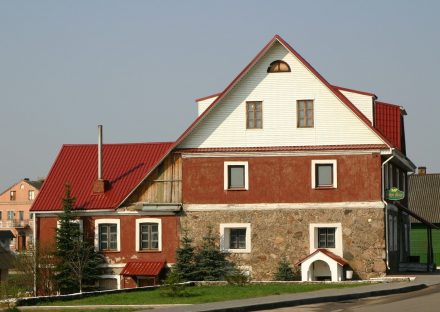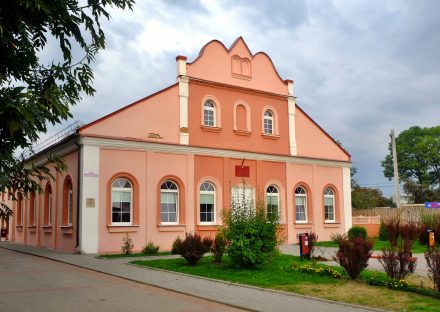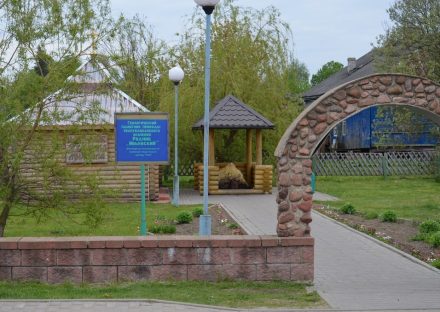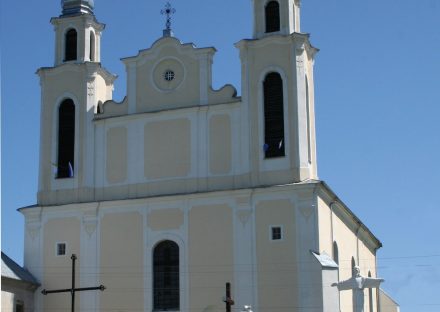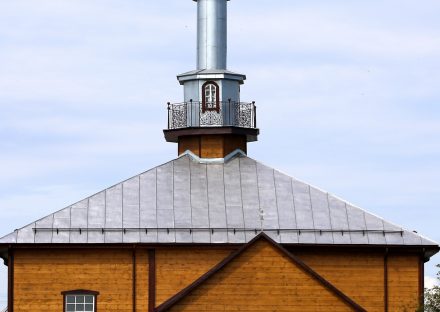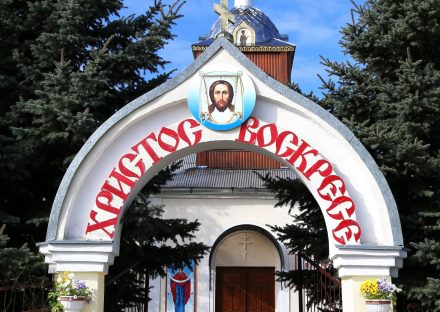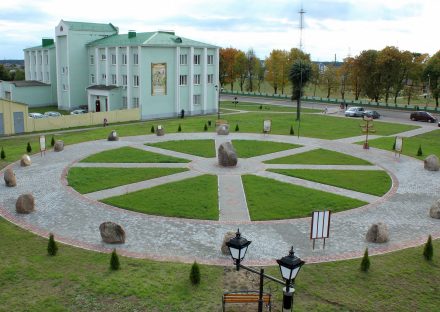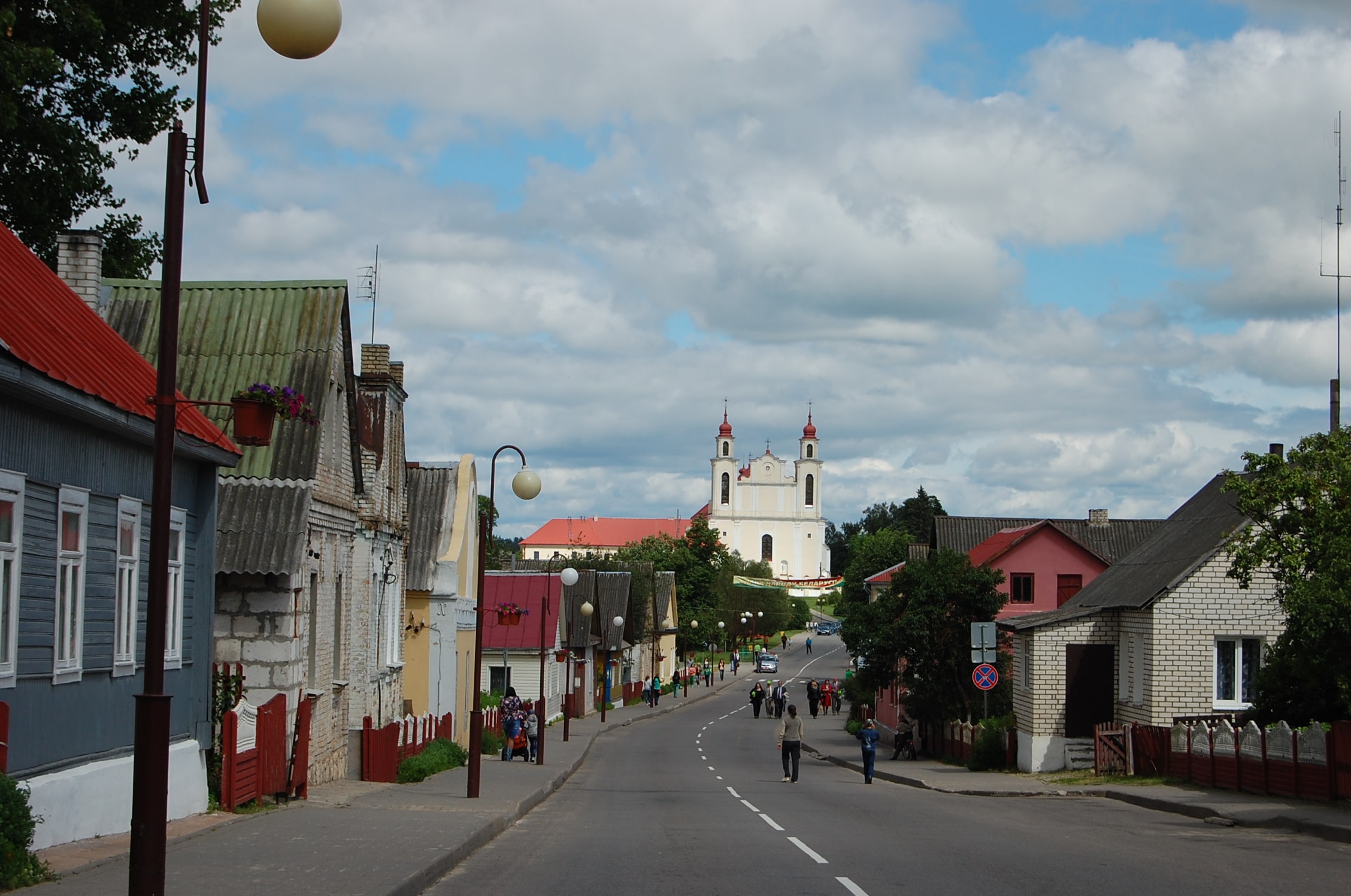
“Ivye multiconfessional”
Route: around Ivye
Route length: up to 12 km
Route time: 90 minutes
Type: bus and walking tour, bicycle
Type: religious, historical and architectural
Organizer: Ivye Museum of National Cultures Management Company, the sports and tourism sector of the Ivye Regional Executive Committee.
Contacts: 801595 68035, 801595 69077
Description of the main attractions along the route:
Ivye is one of the youngest cities in the Grodno region. As the legend says, the name was given to him by a woman – Princess Eva. The wife of Prince Gediminas chose these places on the way from Vilnia to Novogrudok. By her will, a castle was erected, around which the settlement grew. Another legend is no less beautiful: the village was named Ivyem because the nature in the area is replete with many willows. The city’s coat of arms is based on the first of the legends. The symbol depicts a noble lady in princely attire with an open book in her hands. This is not just Princess Eva. For centuries, Iwyu has been fortunate enough to have female owners who have done a lot for his well-being and enlightenment. Their collective image became the symbol of the city. The ancient settlement, the first mention of which dates back to the XIV century, acquired the status of a city only in January 2000. Iwyu’s fame in the 16th century was brought about by the Arian school founded by Jan Kiszka in 1585. This educational institution went down in the history of enlightenment in Belarus under the name Ivye Arian Academy. Its rector was a like-minded person of Symon Budny, a progressive thinker – humanist, teacher and poet Yan Litsiniy Namyslovsky. After the closure of the Ivye Academy, thanks to the established educational traditions, one of the first printing houses in Belarus was founded. It is believed that in 1619 the “Grammar” by Meletiy Smotritsky was also printed in it.
The planning structure of Ivya has developed historically and is due to its location at the intersection of roads to Minsk, Lida, Novogrudok. The main streets of the town were formed along the roads. At their intersection there is a square (former Market). Ivye is called the city of four religions. For centuries, Orthodox and Jews, Catholics and Muslims have coexisted here. The main thing is that we have always lived in friendship and tolerance, preserving our faith and respecting the traditions and customs of each other. Ivyevschina is a land with a rich centuries-old history. In the traditions and life of local residents, the cultures of different peoples are closely intertwined. In July 2009 opened
Ivye Museum of National Cultures. The object of its study and acquisition is the Ivye region as a whole and its connections with the outside world.
Mosque
Built in 1882 at the expense of Countess Elvira Zamoyskaya and the Tatar community of Ivya. Included in the State List of Historical and Cultural Values of the Republic of Belarus.
Church of Saints Peter and Paul
The original Catholic one-nave church was erected in 1491-1495. In the XVII century. the temple was rebuilt and enlarged by Nikolai Kishka. During the Russian-Polish war of 1654-1667, it was burned to the ground. In 1787 a new church was built. For a long time there was a monastery of the Bernardine order at the temple. Included in the State List of Historical and Cultural Values of the Republic of Belarus
Church of the Holy Martyr Gabriel of Bialystok
Opened in May 1994. At the beginning of the 20th century. the building was a residential building, after the Great Patriotic War – a maternity hospital, after the 1970s. – a nursery. In 1993 the building was transferred to the Orthodox Church. A historic event was the visit in July 1994 by the Patriarch of Moscow and All Russia Alexy II.
In the central part of the city, buildings from the late XIX – early. XX centuries, the so-called “Jewish houses”, decorated with profiling and ornaments. Most of them are the former houses of Jewish merchants with an attic storey where goods were stored. In the center is the building of the former synagogue, the appearance of which was preserved after restoration. Now it is a children’s and youth sports school.
Memorable sign “In honor of the friendship and harmony of the confessions of the Iviev region”
The monument was erected on June 30, 2012, but was subsequently supplemented with bas-reliefs and reopened on June 15, 2013. It is a monument consisting of four steep white arches, each of which symbolizes a particular denomination.
In 2013, an open-air exposition “Wheel of History” was opened for visitors, where all the most important events in the history of the city were recorded on boulders.
Ivye spring, early. XX century
A geological monument of republican significance, the Iv’evsky spring. It has been known to residents since 1914. There is an Orthodox baptismal font near the spring.

